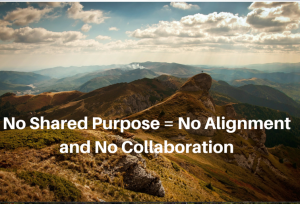 I have been watching Microsoft’s cultural shift to the stated purpose of a more collaborative model with interest. It seems that they are making progress – numbers are up, some sharing is happening and they might not miss as many trends as they have in the past.
I have been watching Microsoft’s cultural shift to the stated purpose of a more collaborative model with interest. It seems that they are making progress – numbers are up, some sharing is happening and they might not miss as many trends as they have in the past.
However, what is most interesting to me is the structure of the old model. Every division or department was a company unto itself, its own silo if you will. It had its own legal, operations, finance and sales departments so in essence you had all these smaller companies inside the big behemoth that is Microsoft. Under Ballmer, and now Nadella, the shift to centralized support under one umbrella is happening and it’s a good thing.
With the old model, there was “no shared purpose” in the broad sense and without that, how can there be sharing of any kind? Any real collaboration beyond immediate team members? The answer is there wasn’t any. It’s pretty simple really, no shared purpose, no sharing. There was no incentive to exchange ideas, discoveries or to collaborate for success because the structure encouraged success within smaller groups vs. rewarding people and teams for working across or outside of immediate areas. They had goals within the divisions, and although I know the company also had stated corporate goals, I suspect the divisional goals were primary.
As Microsoft is finding out, culture shifts are hard and slow. Correctly identifying the root cause of the problem is key to any solution, but it doesn’t guarantee that the issues go away. Leadership is often a cause of a dysfunctional culture, however, it’s often also rooted in structure, as in Microsoft’s case.
Often we put things in place in business to solve the problem of the moment and for the immediate future. We are looking for the short-term fix and next quarter’s success. As companies grow, however, systems fail to work for a variety of reasons. Microsoft waited way to long to change things internally and missed out on multiple technological trends that left them looking like a dinosaur instead of the gazelle they used to be.
It’s so important in business to do a “check-up” frequently to see what process, people, and systems are aligned with the shared purpose or vision of the organization and which are not. We are supposed to get a physical once a year to see how our own personal systems are functioning, why would we not do it for business? Sometimes we review the goals or the strategic plans, but what about the internal workings? The operations?
If you suspect that you might have a couple of dinosaur-like processes in your organization that hold you back from true cultural alignment, maybe it’s time to do a check-up. Does everything you do sell, or create support your Intentional Purpose? Your Vision? Your Values? If not, it’s time for a little realignment from the business chiropractor.
